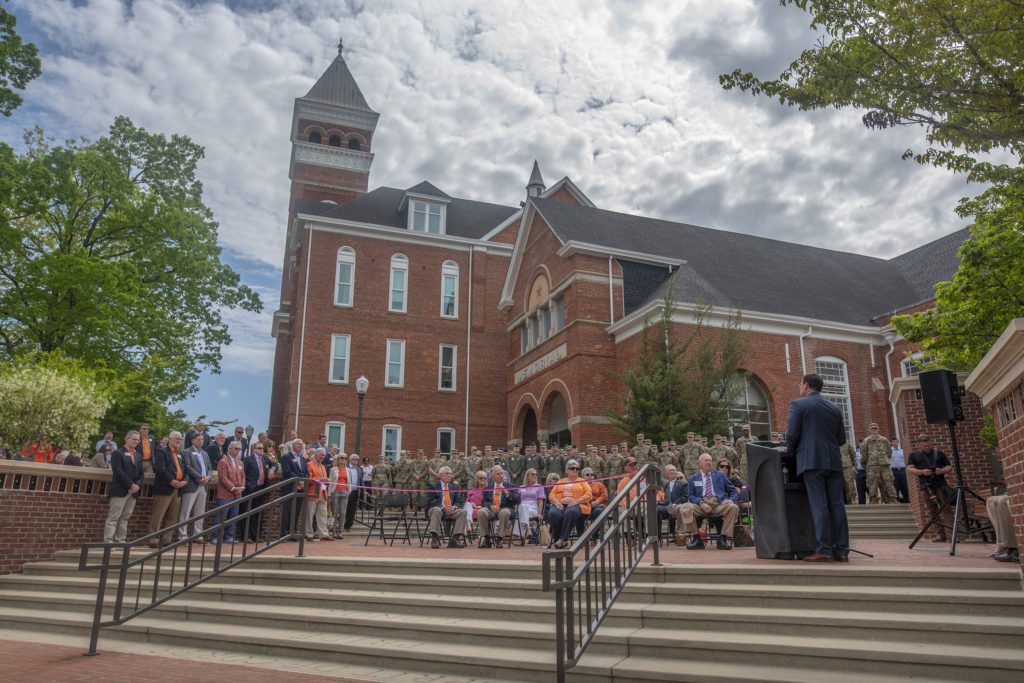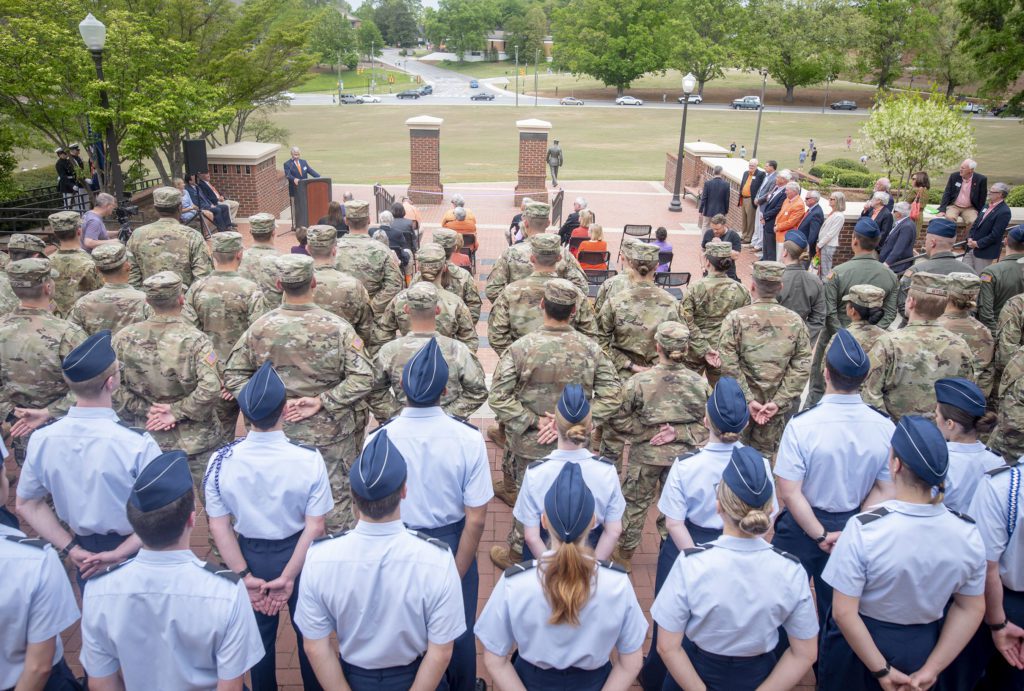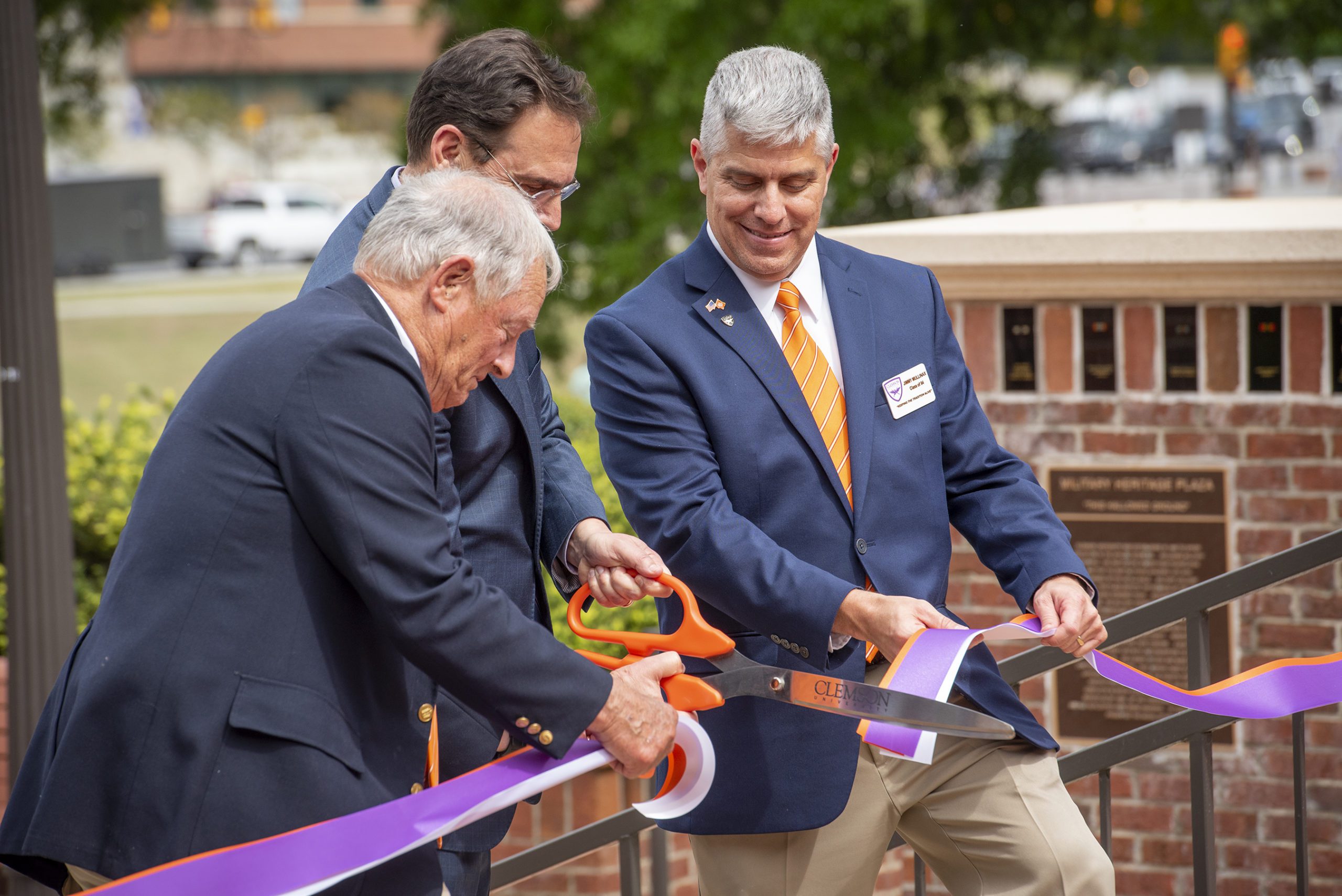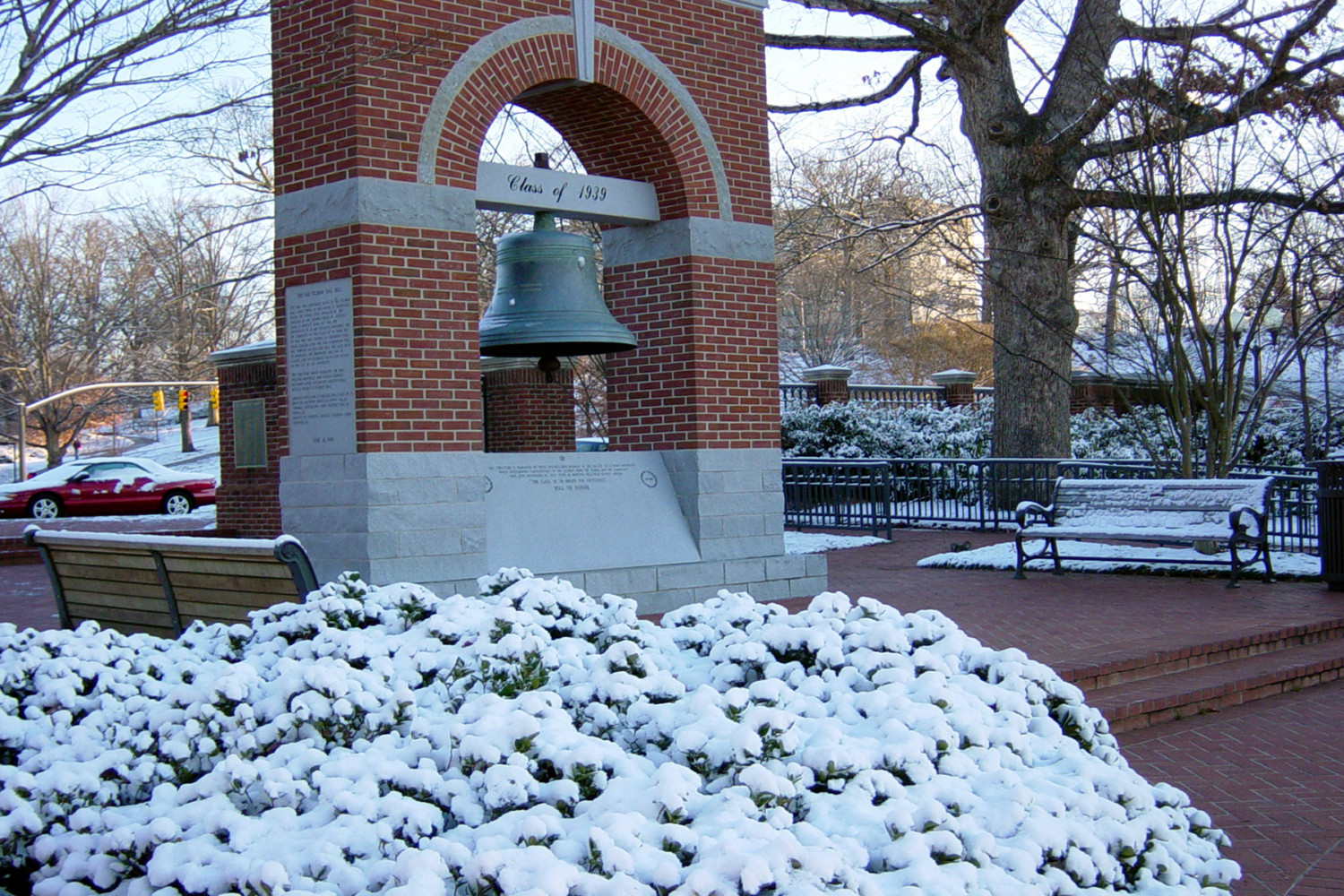A reverent crowd made up of student veterans, faculty, staff, alumni, Reserve Officer’s Training Corps cadets and members of Clemson Corps gathered last Thursday to rededicate some of the most hallowed ground on the Clemson campus after it underwent significant changes and upgrades.
Military Heritage Plaza, the neatly terraced public square between Tillman Hall and Bowman Field, holds a special place in Clemson’s rich military heritage. It was originally dedicated in 1996. Cadets who complete Clemson’s Reserve Officer’s Training Corps programs and commission into the U.S. Army or Air Force receive their first salutes as officers there, known as the “Silver Dollar Salute.”
The Silver Dollar Salute is the first salute given to a newly commissioned officer by an enlisted service member. It shows the respect and admiration that officers receive from their noncommissioned and enlisted service members. An enlisted service member will salute the officer and the officer will give them a silver dollar to remember the occasion and thank them for serving the country.
Silver Dollar Salutes traditionally take place immediately after the joint commissioning ceremony on the lower level of the plaza. The new officers walk down the four terraces of the plaza, which represent each academic year, past the cement footprints of past cadets arranged in a military formation on the second level, through the two brick towers that hold each half of the mold of the statue of a cadet on the third level and receive their salute on the fourth level next to the statue of the senior cadet walking out onto Bowman Field.

The brick walls that enclose the plaza contain an example of every medal received by Clemson alumni encased in acrylic blocks.
Retired Army Lt. Col. Claude Cooper, a 1967 graduate of Clemson who served two tours with the Green Berets in Vietnam, explained the project’s scope.
“We have replaced every medal that was originally displayed and added 33 medals that Clemson men and women have been awarded since the original medals were displayed,” said Cooper, the recipient of more than a few of those medals, including the Legion of Merit, two Bronze Stars and a Purple Heart. “Our alumni have served this nation in war and peace since Clemson was founded. Many sacrificed their lives in doing so. Many were captured and held as prisoners for up to five years. The 94 medals displayed on these walls replicate the thousands of medals that Clemson men and women have been awarded through the years for valor, merit and honorable service while members of the armed forces of the United States.”
Four Clemson alumni have been awarded the Medal of Honor, the highest award given by the U.S. military. Two earned the Army version, one the Navy and Marine version, and one the Navy Tiffany Cross. All three designs have now been added to the plaza. Each medal in the plaza is displayed in accordance with its order of precedence, starting with the Medals of Honor at the highest entrance.
Retired Army Lt. Col. Jimmy Mullinax, chairman of Clemson Corps, said the improvements to the plaza happened with the help of many people —some of who have contributed over the course of many years to fund an endowment that pays for the plaza’s ongoing maintenance.

“Today marks a special moment in the continuation of Clemson’s remarkable military heritage,” said Mullinax. “This plaza links our founding as a military college to the current cadets and marine candidates that will graduate and commission into our United States military.”
Navy veteran Tony Wagner, chief operating officer and executive vice president of Finance, used his keynote address to remind the audience of Clemson’s extraordinary military history.
“In World War I, the entire class of 1917 enlisted in the military – 1,500 in total. Thirty-two of them perished,” said Wagner. “In World War II, it has been said Clemson supplied 6,500 men to the U.S. military and 90 percent of these men were officers who commissioned through our ROTC program. Clemson was just a small A&M school at the time, but it was second only to West Point and to Texas A&M. Three-hundred seventy-six gave their lives, at least 30 in the invasion of Normandy and the invasion of Europe.”
Thursday’s rededication and the Military Plaza refurbishment allowed for the addition of medals earned by Clemson veterans who served in the more recent wars in Iraq and Afghanistan.
Wagner said remembering the sacrifices of those who served, especially those who gave their lives, is an integral part of Clemson and that Military Heritage Plaza is one example of how Clemson holds the service of its veterans above all else.
“At Clemson, we work hard and are thankful for all of our awards, accolades, academic rankings and athletic championships,” said Wagner. “But all of this takes a back seat to the debt of gratitude we owe to the men and women who have served in our armed forces.”








